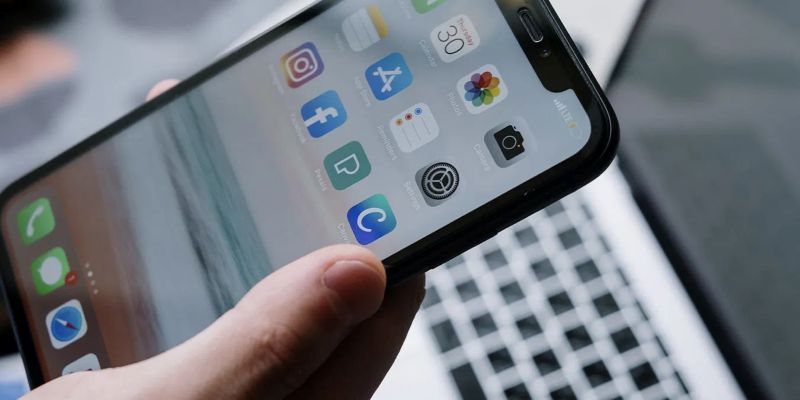

As iPhone users, we often overlook the importance of privacy settings in our quest for convenience and functionality. Let's explore this topic in more detail with Tiny Fishing below, as we delve into the critical privacy settings you should change right now to protect your personal information and enhance your device's security. In an age where data breaches and digital privacy concerns are on the rise, taking control of your iPhone's privacy settings has never been more crucial.
Apple has long been a champion of user privacy, but many iPhone users are unaware of the extensive privacy controls built into their devices. These settings are designed to give you granular control over which apps and services can access your personal information, location data, and other sensitive details. By taking the time to understand and adjust these settings, you can significantly improve your digital privacy and security.
One of the most important aspects of iPhone privacy is the concept of app permissions. When you install an app, it often requests access to various features of your device, such as your camera, microphone, or location. While some of these permissions are necessary for the app to function properly, others may be excessive or potentially invasive. It's essential to regularly review and adjust these permissions to ensure that apps only have access to the information they truly need.
Another critical area of iPhone privacy is the management of your Apple ID and associated services. Your Apple ID is the gateway to many of Apple's services, including iCloud, the App Store, and Find My iPhone. Properly securing your Apple ID and understanding how it interacts with various services can help prevent unauthorized access to your personal information and protect your digital identity.
Read more: iPhone Live Photos: What They Are and How to Use Them
Now that we understand the importance of iPhone privacy settings, let's dive into the specific changes you should make right away to enhance your device's security and protect your personal information.
Location Services is a powerful feature that allows apps to access your device's GPS and provide location-based services. However, not all apps need constant access to your location. To adjust these settings, go to Settings > Privacy > Location Services. Here, you can review which apps have access to your location and choose from options like "Never," "While Using the App," or "Always." For most apps, "While Using the App" is a good balance between functionality and privacy.
Pay special attention to apps that have "Always" access to your location. Consider whether this level of access is necessary and adjust accordingly. Additionally, scroll to the bottom of the Location Services menu and tap on "System Services." Here, you can disable location-based ads and other system services that may not be essential.
Apple collects data to improve its products and services, but you can opt out of this data collection if you prefer. Go to Settings > Privacy > Analytics & Improvements. Here, you can toggle off "Share iPhone Analytics" and other related settings. While this data is anonymized, some users may prefer not to share any information with Apple.
Your iPhone has a unique advertising identifier that allows apps and advertisers to track your activity across different apps and websites. To limit this tracking, go to Settings > Privacy > Tracking and toggle off "Allow Apps to Request to Track." Additionally, go to Settings > Privacy > Apple Advertising and turn off "Personalized Ads" to prevent Apple from using your data to serve targeted advertisements.
Your Apple ID is the key to your digital life on iOS devices, making it a prime target for hackers and cybercriminals. Securing your Apple ID is crucial for protecting your personal information and preventing unauthorized access to your accounts and services.
Two-factor authentication (2FA) adds an extra layer of security to your Apple ID by requiring a verification code in addition to your password when signing in. To enable 2FA, go to Settings > [Your Name] > Password & Security > Turn On Two-Factor Authentication. Follow the prompts to set up this important security feature.
Once enabled, you'll need to enter a code sent to your trusted devices or phone number whenever you sign in to your Apple ID on a new device or browser. This significantly reduces the risk of unauthorized access, even if someone manages to obtain your password.
iCloud is a powerful service that syncs your data across devices, but it's important to understand what information is being stored and shared. Go to Settings > [Your Name] > iCloud to review which apps and services are using iCloud. Consider disabling iCloud sync for apps that don't need it or contain sensitive information.
Pay particular attention to the "iCloud Backup" setting. While backing up your device is important, you may want to exclude certain apps or data types from your iCloud backup for privacy reasons. Tap on "Manage Storage" > "Backups" > [Your Device] to see what's included in your backup and make adjustments as needed.
Read more: Editing Photos on iPhone Like a Pro: Step-by-Step Guide
Beyond the essential settings we've covered, there are several additional steps you can take to further enhance your iPhone's privacy and security. These measures go beyond basic settings and delve into more advanced features and practices that can significantly boost your digital privacy.
A Virtual Private Network (VPN) encrypts your internet traffic and hides your IP address, making it much harder for third parties to track your online activities. While iOS doesn't have a built-in VPN, you can easily set up a VPN by going to Settings > General > VPN & Device Management > VPN. Many reputable VPN services offer iOS apps that make setup and use straightforward.
When choosing a VPN, look for services that prioritize privacy, have a no-logs policy, and offer strong encryption. Using a VPN is particularly important when connecting to public Wi-Fi networks, as these can be easily compromised by hackers.
As you install new apps and update existing ones, it's crucial to regularly review and manage app permissions. Go to Settings > Privacy and tap on each category (such as Contacts, Photos, or Microphone) to see which apps have requested access. Revoke permissions for apps that don't need them or that you no longer use.
Additionally, consider using the "Ask App Not to Track" feature introduced in iOS 14.5. This prompts apps to request permission before tracking your activity across other companies' apps and websites. To ensure this feature is active, go to Settings > Privacy > Tracking and toggle on "Allow Apps to Request to Track."
Safari, Apple's default web browser, offers several privacy-enhancing features that you should take advantage of. Go to Settings > Safari and consider enabling the following options:
. Prevent Cross-Site Tracking: This limits the ability of advertisers to track you across different websites.
. Block All Cookies: While this may affect some website functionality, it provides the highest level of privacy.
. Fraudulent Website Warning: This alerts you if you visit a suspected phishing site.
. Hide IP Address: This feature, when enabled, hides your IP address from trackers, making it harder for websites to create a unique profile of your browsing habits.
Additionally, consider using Safari's Private Browsing mode when visiting sensitive websites. This mode doesn't save your browsing history, search history, or AutoFill information.
In today's digital age, taking control of your iPhone's privacy settings is not just a matter of personal preference—it's a necessity. By implementing the changes we've discussed, from adjusting location services and advertising settings to securing your Apple ID and using additional privacy measures, you're taking significant steps towards protecting your personal information and enhancing your digital security.
Remember that privacy is an ongoing process. As Apple continues to update iOS and introduce new features, it's important to stay informed about the latest privacy options available to you. Regularly review your settings, be mindful of the permissions you grant to apps, and always err on the side of caution when it comes to sharing personal information.
By being proactive about your iPhone's privacy settings, you're not just protecting yourself—you're contributing to a culture of digital privacy and security that benefits everyone. Take the time to implement these changes today, and enjoy the peace of mind that comes with knowing you've taken control of your digital footprint. Your future self will thank you for the steps you've taken to safegu